12 Best Substitutes for Pine Nuts in Pesto
Pine nuts are an authentic ingredient in Italian basil pesto. They are buttery and delicious. But, the hefty price tag, allergies, and pine nut syndrome have us searching for the best substitute for pine nuts.
The Italians knew what they were doing when they made pesto alla Genovese. It’s a gorgeous green condiment made from only a few good-quality, fresh ingredients.
Traditional basil pesto contains crushed fresh garlic, European pine nuts, coarse sea salt, fresh basil leaves, and gated hard cheese like Pecorino or Parmigiano-Reggiano (freshly grated parmesan cheese), all blended with extra-virgin olive oil.
But pine nuts are expensive! And, whether you choose to skip these expensive seeds because of their price, an allergy, or you simply ran out, we have you covered with the best alternatives.
My favourite substitute for pine nuts in classic basil pesto is cashew nuts. But, if you have a nut allergy, you can use sunflower seeds or pepitas. Or keep reading to find the best substitute for pine nuts that fit your pantry.
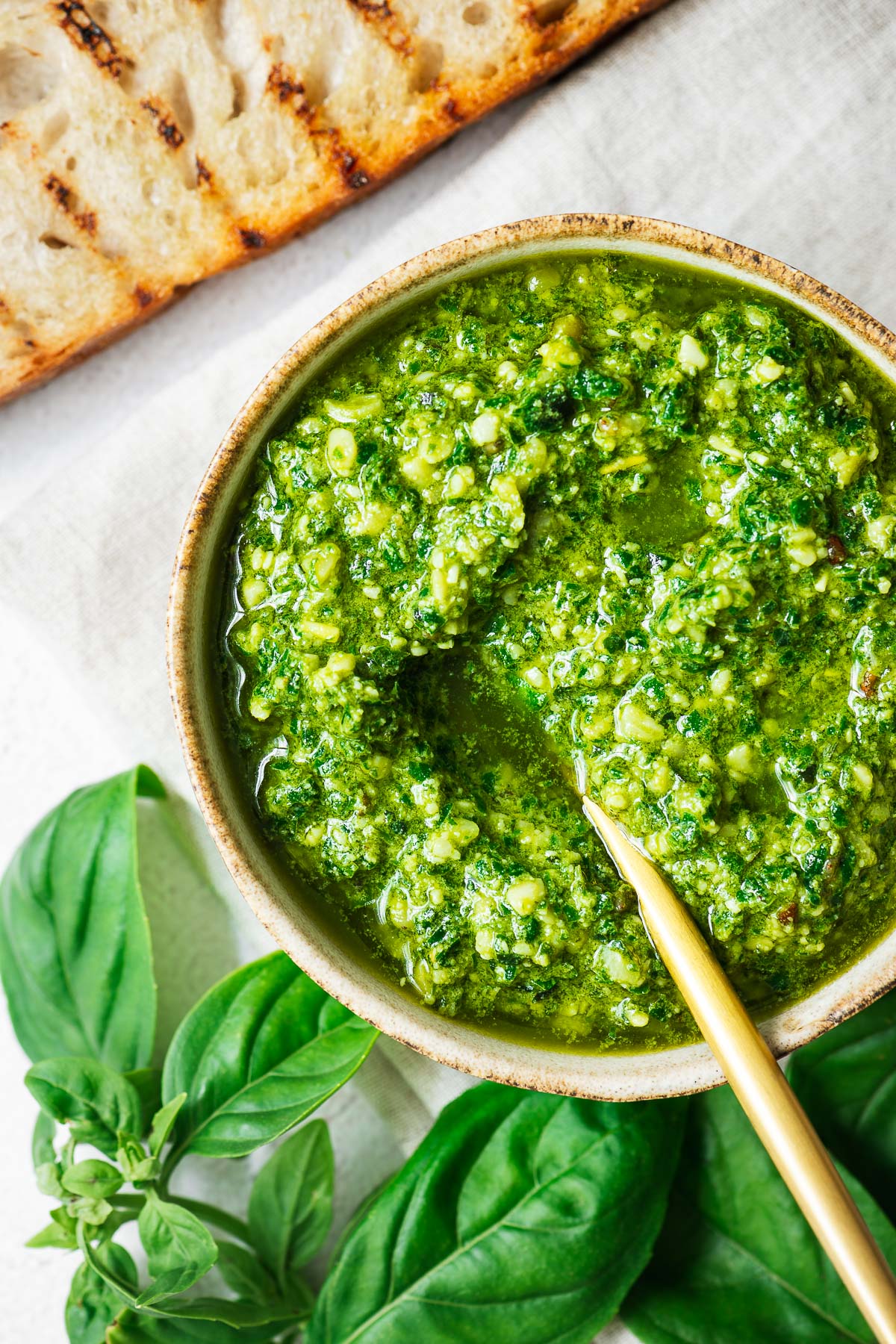
What are pine nuts?
Pine nuts (or pignoli) are the edible seeds inside hard, inedible casings found in pine cones. Harvesters remove the pine nuts from their protective encasement by hand. Hence the hefty price tag.
The soft, ivory-coloured seeds are sweet and buttery with a pleasant nutty crunch.
In addition to pine nut allergies, the fear of the taste disturbance called pine nut syndrome (or pine mouth) has some of us searching for the best pine nut alternatives.
And let’s not forget the expensive price tag.
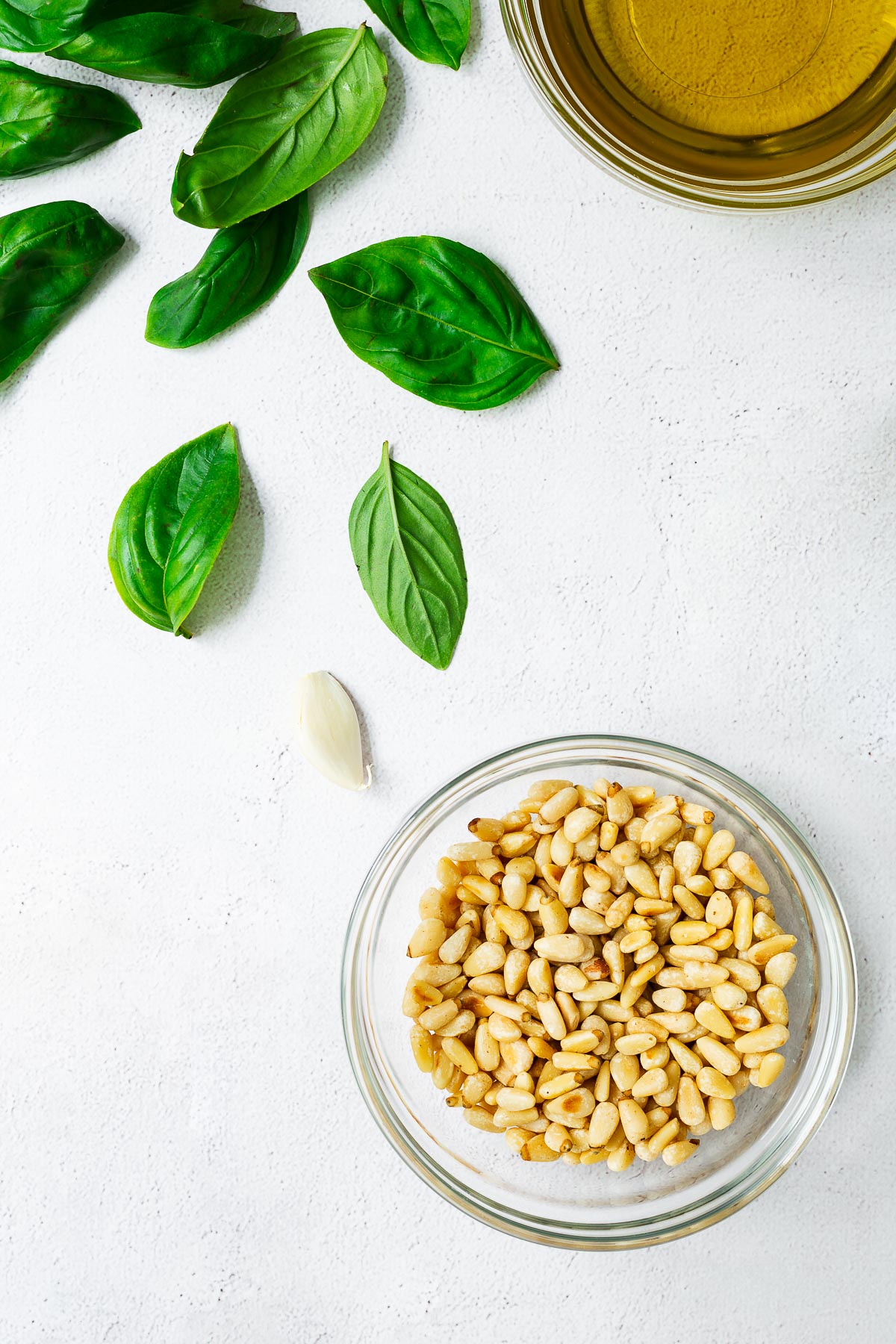
The best pine nut substitutes for pesto
While traditional pesto Genovese calls for these expensive nuts, many homemade pesto recipes use other whole nuts.
For the best pine nut substitute in classic pesto, we need to replace this small, tear-shaped, soft, buttery nut with something similar.
I list some great, cheaper alternatives to pine nuts in pesto. But, I also explore other nuts and seeds that may not be that similar yet make delicious homemade pesto.
1. Cashew nuts
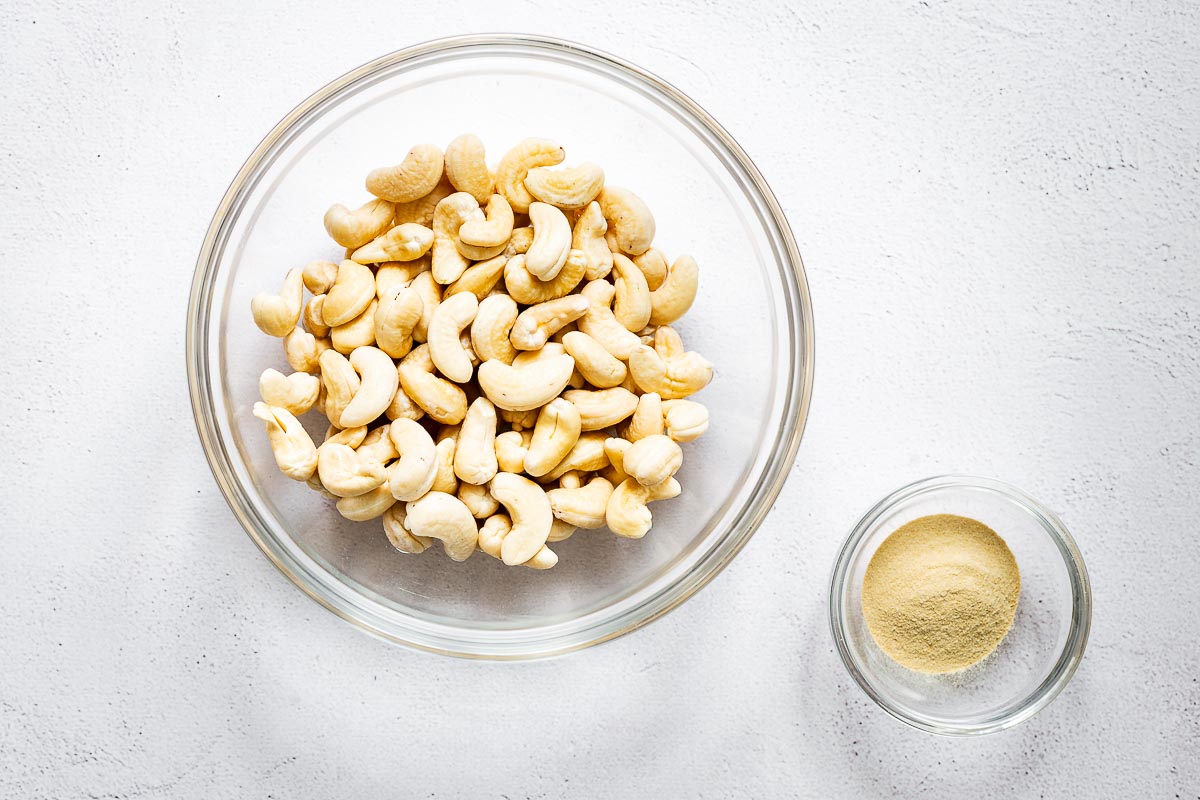
Raw, unsalted cashew nuts are the best substitute for pine nuts in traditional pesto. They have a similar texture and sweet taste.
To enhance the nutty flavour, roughly chop cashew nuts and lightly toast them in a hot, dry pan. You want them to be lightly golden, not burnt. So keep a close eye. It should take around one minute.
Substitute a tablespoon of pine nuts with an equal amount of cashews, chopped roughly into the size of pine nuts.
2. Macadamia nuts
Unsalted macadamia nuts are another great option. They have a sweeter taste and an intense buttery texture thanks to their high fat content. Roast the macadamia nuts to intensify their buttery notes.
Replace a tablespoon of pine nuts with a tablespoon of roughly chopped macadamia nuts.
3. Unsalted pistachios
Pistachio nuts are a popular choice in Mediterranean cuisine that make a delicious basil pesto.
Use unsalted pistachios as a direct substitute for pine nuts in pesto or to top sweet and savoury dishes that call for pine nuts in the recipe.
4. Almonds
Almonds may not have the same buttery flavour as pine nuts, but they make a great pesto. In fact, the Sicilian version of Genovese pesto, known as pesto alla Trapanese or pesto alla Siciliana, contains almonds.
Typical ingredients in traditional Sicilian pesto are garlic, basil, almonds, grated pecorino cheese, tomatoes, salt, black pepper, and lots of extra virgin olive oil.
So, maybe give this different traditional pesto a try. Or use chopped almonds as a direct substitute for pine nuts in classic pesto.
Try this quinoa kale chickpea salad with an easy food processor kale pesto using almonds.
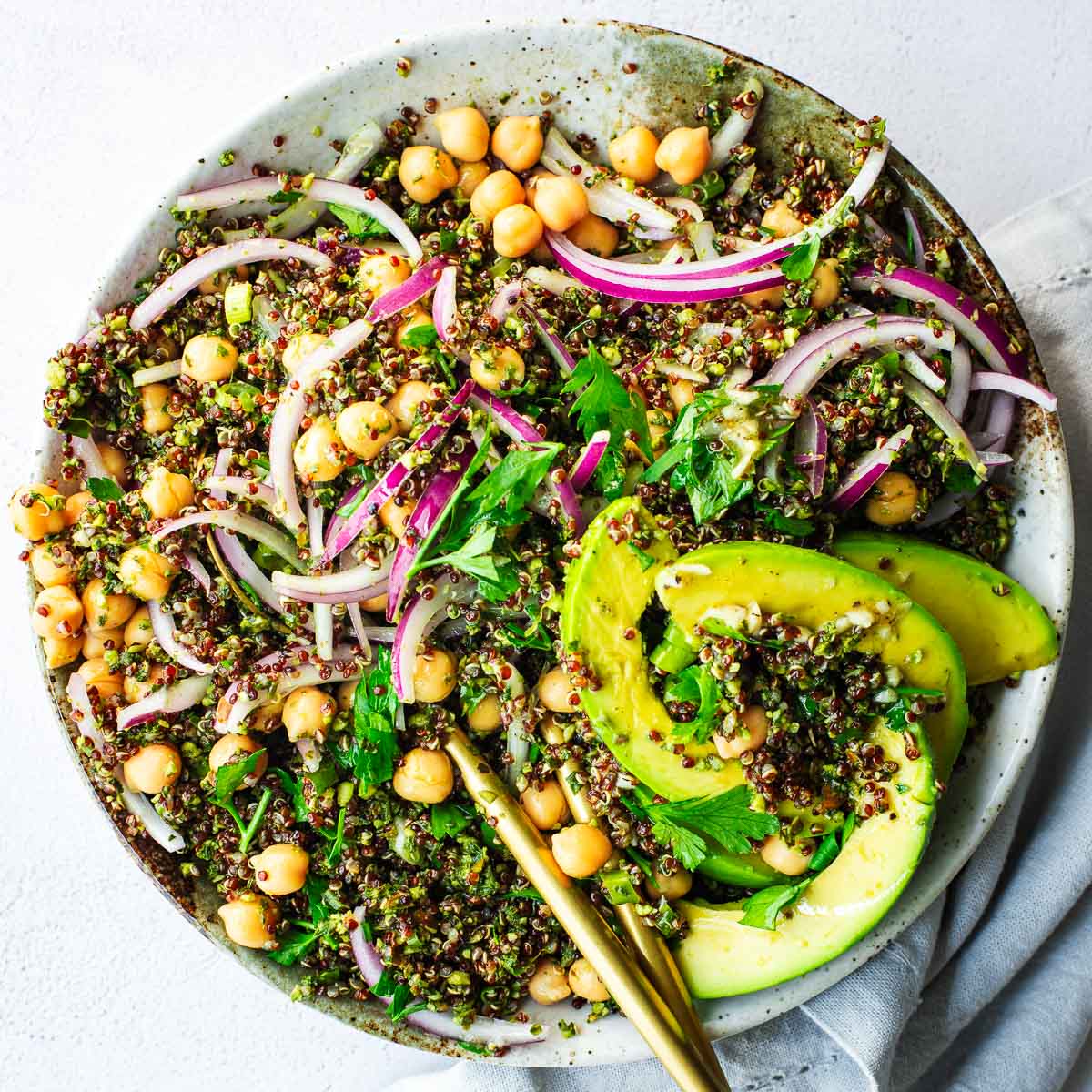
5. Pecan nuts
The darker colour of pecan nuts makes them a less-than-ideal visual substitute for pine nuts in traditional Genovese pesto.
But, they have a wonderful flavour and creamy texture once pounded. So, the colour of your pesto will be less homogenous with dark flecks of pecan nuts. Yet it will have a delicious nutty flavour and creamy texture.
Use them to make pesto at home. Or scatter toasted pecan nuts, cut to the size of pine nuts, over savoury dishes that call for pine nuts.
6. Walnuts
Walnuts have a very similar fat content to pine nuts, but they can have a bitter flavour due to the tannins in their skins.
You can bash walnuts into a paste to use in pesto, but it will have a better flavour if you undertake the laborious task of removing their skins. I would settle for whole walnuts that yield a different-tasting pesto rather than take on that task.
Roughly chopped walnuts are also a great substitute in savoury dishes and dips that require a topping of pine nuts.
Related recipes
- Try this labneh with sweet and spicy cherry tomato sauce with walnuts instead of pine nuts.
- Or try a red pepper and walnut sauce (muhammarra) instead of pesto.
7. Blanched hazelnuts
Hazelnuts are a common ingredient in sweet Italian baked goods, like torta di nocciole (hazelnut cake), baci di dama (hazelnut cookie kisses), and gianduja (chocolate hazelnut spread).
But you can absolutely use them in savoury dishes too.
They don’t have the same buttery flavour as pine nuts. And the texture is not as soft. But they have a delicious intense nutty flavour.
Use blanched hazelnuts to avoid the dark hazelnut skins, and lightly roast them in the oven to intensify their nutty flavour.
Replace every tablespoon of pine nuts with a tablespoon of chopped blanched and roasted hazelnuts.
8. Brazil nuts
As with other nut substitutes for pine nuts, Brazil nuts add a nutty flavour and creamy texture to your homemade pesto.
To replace pine nuts with brazil nuts, roughly chop the large nuts into pine nut-sized pieces. Then measure the equivalent amount of chopped Brazil nuts your recipe calls for.
9. Sunflower seeds
Sunflower seeds are a good substitute for pine nuts if you want to keep it a nut-free pesto. Yes, pine nuts are also not nuts.
While cashew nuts make the best substitute for pine nuts in pesto, sunflower seeds are great if you have a nut allergy.
You won’t have the same buttery flavour, but sunflower seeds add texture and fat to balance all that herbaceous basil goodness.
Try leftover broccoli and sunflower seed pesto (see charred broccolini recipe for more details.)
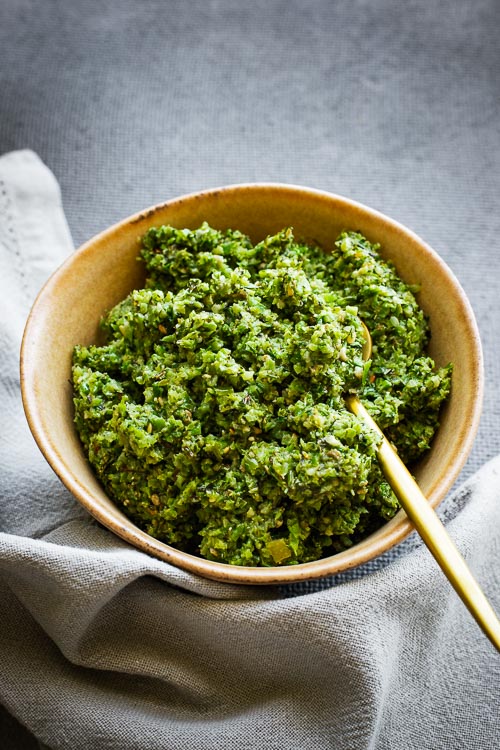
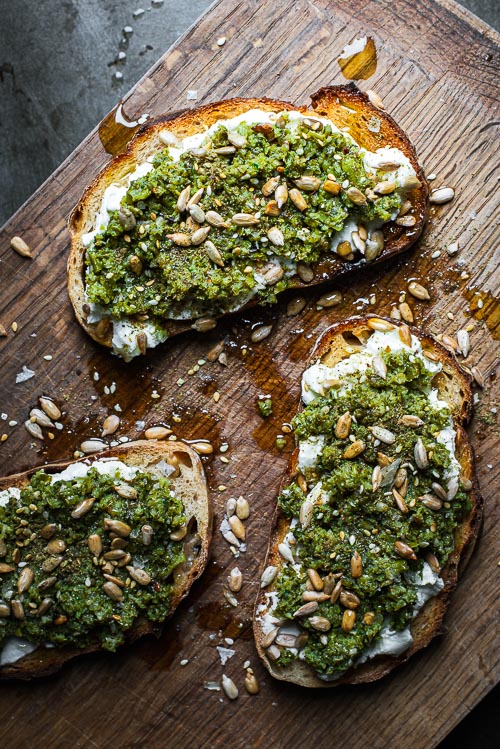
10. Pepitas (pumpkin seeds)
You can also use pepitas as another nut-free alternative. Pepitas are pumpkin seeds that have no tough outer shell.
They occur naturally shell-free in certain types of pumpkins. But you can also remove the outer shell from ordinary pumpkin seeds to get the soft inner seed.
Learn more about pepitas vs pumpkin seeds (article by Christine from The Cookful)
11. Sesame seeds
Sesame seeds are another great nut-free option for pesto.
Substitute each tablespoon of pine nuts with a tablespoon of hulled sesame seeds. You can toast the sesame seeds for extra flavour.
And if you’re in a rush, swap the tablespoon of sesame seeds for a tahini. Stir the paste through your pounded or processed basil leaves along with the olive oil and kosher salt for a creamy nut-free pesto!
Add more tahini to taste for a creamier pesto.
12. Nut butter
Nut butter is not only a suitable pine nut substitute in homemade pesto, but it’s also a bit of a kitchen hack. You can even use peanut butter. It’s the most accessible, inexpensive substitute that most of us have at home already.
Using nut butter instead of pounding nuts at home saves time and energy.
Whichever nut butter you choose to use, make sure it’s unflavoured, unsweetened and unsalted for the best results. I buy a pistachio and cashew nut butter that makes seriously good pesto.
Use a tablespoon of nut butter to replace a tablespoon of pine nuts. Stir nut butter into the chopped or bounded basil leaves. Reduce the amount of olive oil the recipe calls for and adjust the olive oil to taste at the end.
Why not make nut-free pesto instead?
The slightly less well-known French pistou sauce is a cold sauce with garlic, fresh basil and olive oil. It’s similar to a pesto without nuts or cheese. However, modern versions may include grated hard cheese.
So, instead of substituting pine nuts in pesto, you can simply omit it in favour of pistou.
How to make pesto without pine nuts
The word pesto means pounded in Italian. And, while traditional pesto gets pounded in a marble mortar and pestle (like in this pesto alla Genovese recipe), you can also use a food processor.
Or, even better, use the food processor method as I do in this large batch food processor pesto recipe and this homemade pesto without cheese.
Simply follow the pesto recipe and use your chosen pine nut substitute for a pine nut-free pesto that suits your pantry!
How to use pesto
Today, pesto is available in many flavours and is no longer exclusively used in Italian cuisine. It’s an incredibly versatile sauce that makes weeknight cooking quick and easy!
And, whether you’re a fan of classic basil pesto or adventurous enough to try variations like sun-dried tomato or kale pesto, here are some creative ways to use this flavour-packed condiment:
- Pesto pasta: Serve pistachio basil pesto with cooked spaghetti for a taste of Southern Italy. Top it with a squeeze of lemon juice and lemon zest.
- Pesto pizza: Use pesto as a pizza sauce alternative. Spread a thin layer of pesto on your pizza dough, then top it with your favourite ingredients like mozzarella cheese, cherry tomatoes, and pine nuts. Bake until bubbly and golden for a pizza with a delightful twist.
- Savoury sandwiches: Spread pesto on sandwiches or wraps for a burst of flavour. It pairs wonderfully with grilled chicken, turkey, or roasted vegetables. Add some fresh greens and you have a gourmet sandwich ready to impress your taste buds.
- Egg dishes: Elevate your breakfast or brunch by incorporating pesto into scrambled eggs, omelettes, or frittatas.
- Hearty soups and stews: Stir pesto into soups or stews just before serving to add a burst of freshness and complexity. It’s particularly delightful in tomato-based soups or minestrone.
- Salad dressing: Pesto makes a great low-effort salad dressing for grain bowls and green salads. Mix this vegan basil pesto with a squeeze of lemon juice and a splash of olive oil, then drizzle the pesto salad dressing over your favourite grain bowl or salad.
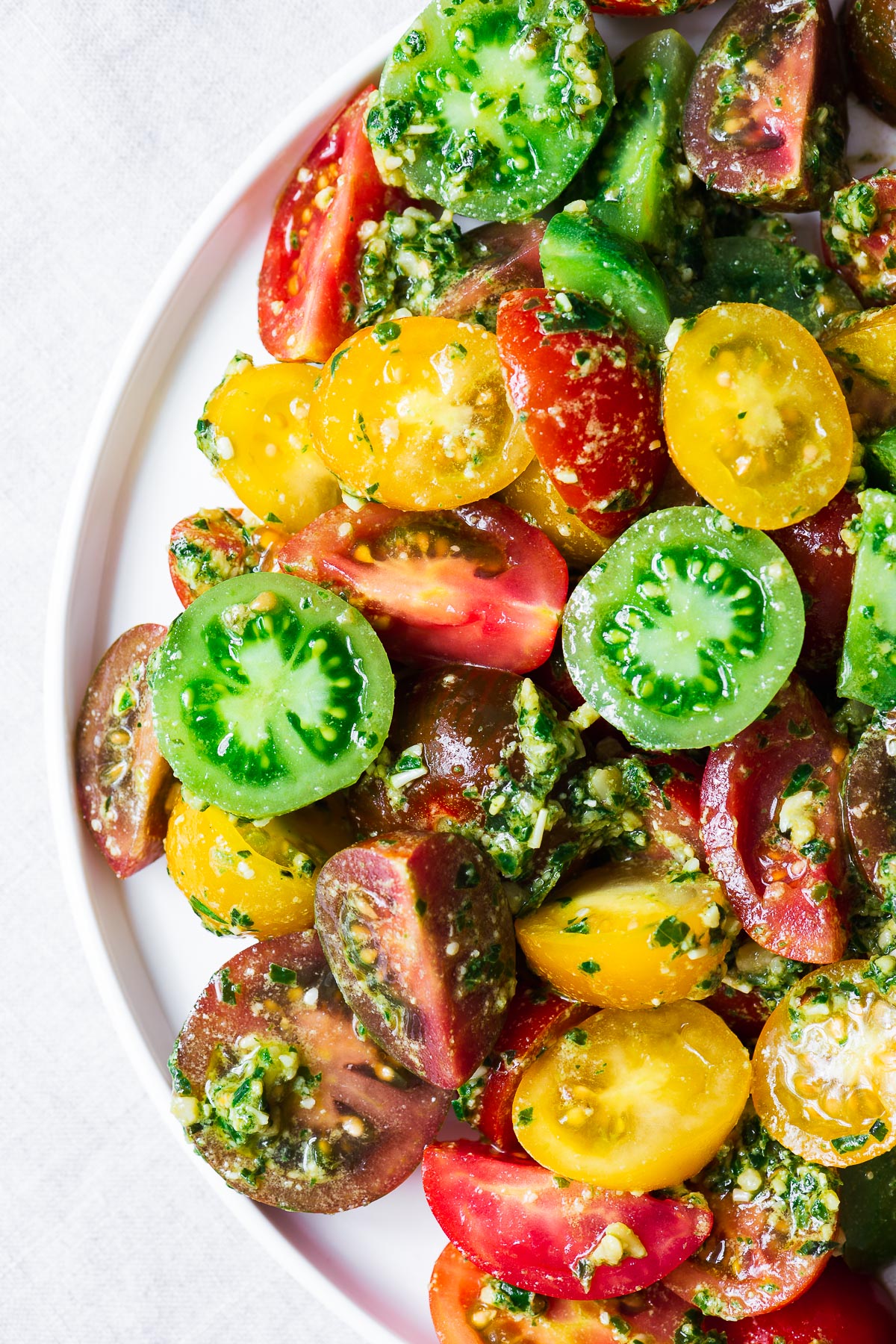
Frequently asked questions
Cashews are the closest match in terms of flavour and texture. But you can also make pesto with walnuts or almonds. For nut-free pesto, sunflower seeds or pepitas are a great alternative.
Walnuts, almonds, and pistachios are popular choices in pesto to add a nutty flavour and creamy texture. You can also use hazelnuts for a more pronounced, nutty taste.
Pine nuts are a traditional ingredient in classic Italian pesto, adding their distinct, slightly sweet, and creamy flavour. However, they are not irreplaceable. Many alternative nuts or seeds can provide a similar richness and depth to pesto. Try cashew nuts or sunflower seeds in your next pesto.
Whether you make a sun-dried tomato pesto with walnuts or a classic basil pesto with cashew nuts instead of pine nuts, pesto sauce is incredibly versatile.
Keep your homemade or store-bought pesto in the fridge, ready to grab and add a flavour boost to any meal.

I have used pumpkin seeds and thought it was delicious.
Wonderful, Nancy! I recently used pumpkin seeds in a broccoli pesto and also loved it. They’re so delicious and affordable but often overlooked!